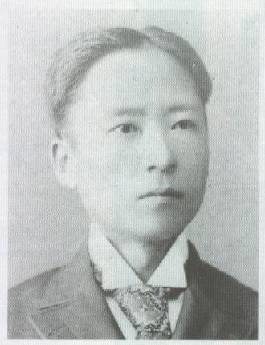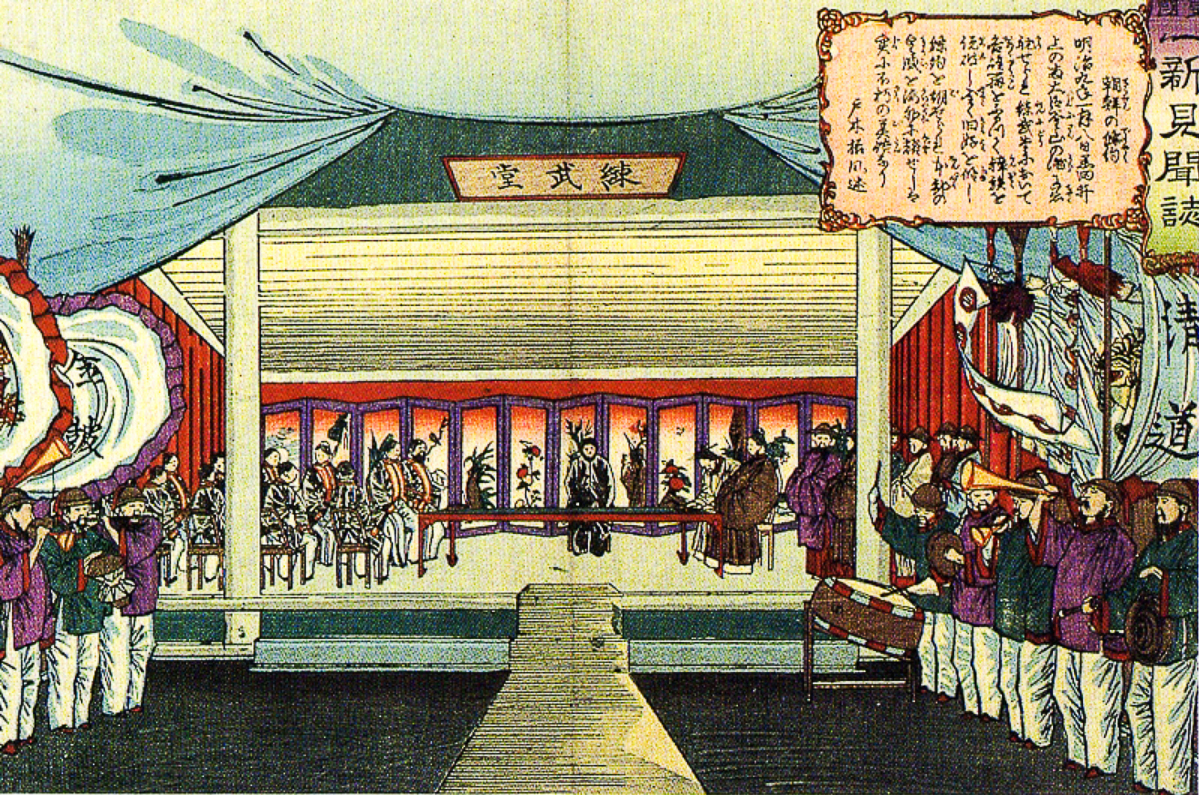|
Hwangseong Sinmun
The ''Hwangseong Sinmun'' ("Capital Gazette" or "Imperial Capital Gazette") (1898-1910) was one of Korea's earliest Korean-language dailies. It was established by Namgung Ok (; 1863-1939) and Na Sugyeong (; 1861-1926) in 1898 to serve as a mouthpiece for those elements of the Korean progressive movement less keen on the strong Christian orientation of the country's other major reform-minded newspaper, ''The Independent''. Published in Korean mixed script, one of the paper's most notable contributors was Shin Chaeho, the Korean nationalist historian. Reflecting its reformist bent, the ''Hwangseong sinmun'' published in a mixture of Hanja and native Korean script. In the wake of Japan's assumption of protectorship over the Korean Empire in 1905, the newspaper responded with strongly worded criticisms. Most prominent among these was an editorial by Jang Jiyeon (, 1864-1921) entitled, "I Wail Bitterly Today I Wail Bitterly Today(이 날에 목놓아 통곡하노라) or Si Il ya ... [...More Info...] [...Related Items...] OR: [Wikipedia] [Google] [Baidu] |
Tongnip Sinmun
''The Independent'' or ''Tongnip Sinmun'' (독립신문; 1896–1899) was an early Korean newspaper. ''Tongnip Sinmun'' was the first privately managed modern daily newspaper in Korea. It was founded in July 1896 by a member of the enlightened Korean intelligentsia, Seo Jae-pil (later known as Philip Jaisohn). It constituted two different language editions: Korean and English. Originally, it was published every other day and developed into a daily newspaper in Korean. The English edition, originally published every other day like the Korean edition, was later only published weekly. It has been estimated that the paper's average circulation per issue was between two and three thousand copies. Background The key figure in the paper's establishment was undeniably Seo Jae-pil. After the failure of the progressive Gapsin Coup in 1884, Seo sought refuge in the United States. In exile he learned from Pak Yeong-hyo (, ) that he had been pardoned from the charge of high treason as of March ... [...More Info...] [...Related Items...] OR: [Wikipedia] [Google] [Baidu] |
Si Il Yabangseong Daegok
The International System of Units, known by the international abbreviation SI in all languages and sometimes pleonastically as the SI system, is the modern form of the metric system and the world's most widely used system of measurement. Established and maintained by the General Conference on Weights and Measures (CGPM), it is the only system of measurement with an official status in nearly every country in the world, employed in science, technology, industry, and everyday commerce. The SI comprises a coherent system of units of measurement starting with seven base units, which are the second (symbol s, the unit of time), metre (m, length), kilogram (kg, mass), ampere (A, electric current), kelvin (K, thermodynamic temperature), mole (mol, amount of substance), and candela (cd, luminous intensity). The system can accommodate coherent units for an unlimited number of additional quantities. These are called coherent derived units, which can always be represented as products ... [...More Info...] [...Related Items...] OR: [Wikipedia] [Google] [Baidu] |
Korean Mixed Script
Korean mixed script () is a form of writing the Korean language that uses a mixture of the Korean alphabet or ''hangul'' () and ''hanja'' (, ), the Korean name for Chinese characters. The distribution on how to write words usually follows that all native Korean words, including suffixes, particles, and honorific markers are generally written in ''hangul'' and never in ''hanja''. Sino-Korean vocabulary or ''hanja-eo'' (), either words borrowed from Chinese or created from Sino-Korean roots, were generally always written in ''hanja'' although very rare or complex characters were often substituted with ''hangul''. Although the Korean alphabet was introduced and taught to people beginning in 1446, most literature until the early twentieth century was written in literary Chinese known as ''hanmun'' (). Although examples of mixed-script writing are as old as ''hangul'' itself, the mixing of ''hangul'' and ''hanja'' together in sentences became the official writing system of the K ... [...More Info...] [...Related Items...] OR: [Wikipedia] [Google] [Baidu] |
Shin Chaeho
Sin Chaeho, or Shin Chae-ho (; November 7, 1880 – February 21, 1936), was a Korean independence activist, historian, anarchist, nationalist, and a founder of Korean nationalist historiography (민족 사학, ''minjok sahak''; sometimes shortened to ''minjok''). He is held in high esteem in both North and South Korea. Two of his works, '' A New Reading of History'' (''Doksa Sillon''), written in 1908, and ''The Early History of Joseon'' (''Joseon Sanggosa''), published in 1931, are considered key works of nationalist historiography in modern Korea. He argued that modern Koreans and the people of Manchuria were of a single race which has an ancestral claim to both Korea and Manchuria, Shin also studied Korean mythology. During his exile in China, Shin joined the Eastern Anarchist Association and wrote anti-imperialist and pro-independence articles in various outlets; his anarchist activities lead to his arrest and subsequent death in prison, February 21, 1936. Biography Early ... [...More Info...] [...Related Items...] OR: [Wikipedia] [Google] [Baidu] |
Korean Nationalist Historian
Korean nationalist historiography is a way of writing Korean history that centers on the Korean '' minjok'', an ethnically or racially defined Korean nation. This kind of historiography emerged in the early twentieth century among Korean intellectuals who wanted to foster national consciousness to achieve Korean independence from Japanese domination. Its first proponent was journalist and independence activist Shin Chaeho (1880–1936). In his polemical ''New Reading of History'' (''Doksa Sillon''), which was published in 1908 three years after Korea became a Japanese protectorate, Shin proclaimed that Korean history was the history of the Korean ''minjok'', a distinct race descended from the god Dangun that had once controlled not only the Korean peninsula but also large parts of Manchuria. Nationalist historians made expansive claims to the territory of these ancient Korean kingdoms, by which the present state of the ''minjok'' was to be judged. Shin and other Korean intell ... [...More Info...] [...Related Items...] OR: [Wikipedia] [Google] [Baidu] |
Hanja
Hanja (Hangul: ; Hanja: , ), alternatively known as Hancha, are Chinese characters () used in the writing of Korean. Hanja was used as early as the Gojoseon period, the first ever Korean kingdom. (, ) refers to Sino-Korean vocabulary, which can be written with Hanja, and (, ) refers to Classical Chinese writing, although "Hanja" is also sometimes used to encompass both concepts. Because Hanja never underwent any major reforms, they are mostly resemble to ''kyūjitai'' and traditional Chinese characters, although the stroke orders for some characters are slightly different. For example, the characters and as well as and . Only a small number of Hanja characters were modified or are unique to Korean, with the rest being identical to the traditional Chinese characters. By contrast, many of the Chinese characters currently in use in mainland China, Malaysia and Singapore have been simplified, and contain fewer strokes than the corresponding Hanja characters. In Japan, s ... [...More Info...] [...Related Items...] OR: [Wikipedia] [Google] [Baidu] |
I Wail Bitterly Today
I Wail Bitterly Today(이 날에 목놓아 통곡하노라) or Si Il ya Bangseong Daegok(시일야방성대곡) is an editorial in the Hwangseong Sinmun(황성신문) on November 20, 1905, which was written by Jang Ji-yeon(장지연), the editor-in-chief of the newspaper. This editorial argued that the Japan-Korea Treaty of 1905 was unlawful and criticized Five Ministers of the Korean government and Ito Hirobumi who contributed to the treaty. It was widely circulated and is considered representative of the Korean reaction to the establishment of a Japanese protectorate.Schmid, Andre. "Colonialism and the 'Korea Problem' in the Historiography of Modern Japan." ''Journal of Asian Studies'' 59:4 (Nov 2000): 951-976. {{cquote, When it was recently made known the Marquis Ito would come to Korea our deluded people all said, with one voice, that he is the man who will be responsible for the maintenance of friendship of between the three countries of the Far East (Japan, China, and Korea) ... [...More Info...] [...Related Items...] OR: [Wikipedia] [Google] [Baidu] |
Korean-language Newspapers
Korean (South Korean: , ''hangugeo''; North Korean: , ''chosŏnmal'') is the native language for about 80 million people, mostly of Korean descent. It is the official and national language of both North Korea and South Korea (geographically Korea), but over the past years of political division, the two Koreas have developed some noticeable vocabulary differences. Beyond Korea, the language is recognised as a minority language in parts of China, namely Jilin Province, and specifically Yanbian Prefecture and Changbai County. It is also spoken by Sakhalin Koreans in parts of Sakhalin, the Russian island just north of Japan, and by the in parts of Central Asia. The language has a few extinct relatives which—along with the Jeju language (Jejuan) of Jeju Island and Korean itself—form the compact Koreanic language family. Even so, Jejuan and Korean are not mutually intelligible with each other. The linguistic homeland of Korean is suggested to be somewhere in contemporary Nor ... [...More Info...] [...Related Items...] OR: [Wikipedia] [Google] [Baidu] |
1898 Establishments In Korea
Events January–March * January 1 – New York City annexes land from surrounding counties, creating the City of Greater New York as the world's second largest. The city is geographically divided into five boroughs: Manhattan, Brooklyn, Queens, The Bronx and Staten Island. * January 13 – Novelist Émile Zola's open letter to the President of the French Republic on the Dreyfus affair, ''J'Accuse…!'', is published on the front page of the Paris daily newspaper ''L'Aurore'', accusing the government of wrongfully imprisoning Alfred Dreyfus and of antisemitism. * February 12 – The automobile belonging to Henry Lindfield of Brighton rolls out of control down a hill in Purley, London, England, and hits a tree; thus he becomes the world's first fatality from an automobile accident on a public highway. * February 15 – Spanish–American War: The USS ''Maine'' explodes and sinks in Havana Harbor, Cuba, for reasons never fully established, killing 266 me ... [...More Info...] [...Related Items...] OR: [Wikipedia] [Google] [Baidu] |
1910 Disestablishments
Year 191 ( CXCI) was a common year starting on Friday (link will display the full calendar) of the Julian calendar. At the time, it was known as the Year of the Consulship of Apronianus and Bradua (or, less frequently, year 944 ''Ab urbe condita''). The denomination 191 for this year has been used since the early medieval period, when the Anno Domini calendar era became the prevalent method in Europe for naming years. Events By place Parthia * King Vologases IV of Parthia dies after a 44-year reign, and is succeeded by his son Vologases V. China * A coalition of Chinese warlords from the east of Hangu Pass launches a punitive campaign against the warlord Dong Zhuo, who seized control of the central government in 189, and held the figurehead Emperor Xian hostage. After suffering some defeats against the coalition forces, Dong Zhuo forcefully relocates the imperial capital from Luoyang to Chang'an. Before leaving, Dong Zhuo orders his troops to loot the tombs of the Ha ... [...More Info...] [...Related Items...] OR: [Wikipedia] [Google] [Baidu] |
Newspapers Published In Korea
A newspaper is a periodical publication containing written information about current events and is often typed in black ink with a white or gray background. Newspapers can cover a wide variety of fields such as politics, business, sports and art, and often include materials such as opinion columns, weather forecasts, reviews of local services, obituaries, birth notices, crosswords, editorial cartoons, comic strips, and advice columns. Most newspapers are businesses, and they pay their expenses with a mixture of subscription revenue, newsstand sales, and advertising revenue. The journalism organizations that publish newspapers are themselves often metonymically called newspapers. Newspapers have traditionally been published in print (usually on cheap, low-grade paper called newsprint). However, today most newspapers are also published on websites as online newspapers, and some have even abandoned their print versions entirely. Newspapers developed in the 17th century, as ... [...More Info...] [...Related Items...] OR: [Wikipedia] [Google] [Baidu] |








